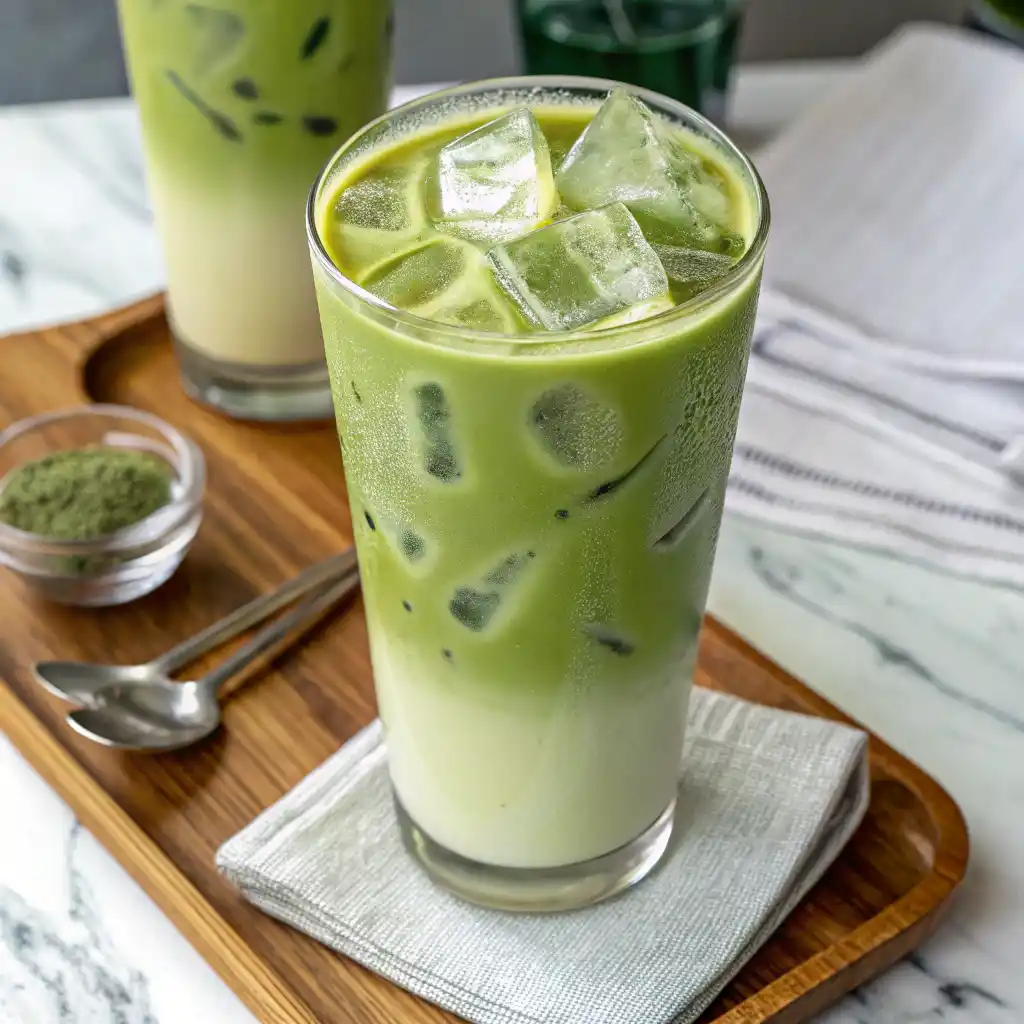There’s something magical about making an iced matcha latte—that first sip of a cold, creamy green tea drink on a warm afternoon is simply unforgettable. It’s refreshing, energizing, and honestly? It feels like you’re treating yourself to something special. What I love most about this iced matcha latte is that it isn’t just delicious—it’s packed with antioxidants and gives you that gentle, sustained energy without the jittery crash you get from regular coffee.
I’ve been perfecting my iced matcha latte recipe for years now, and I’m excited to share my simple version that tastes like it came straight from your favorite café. But here’s the best part: this iced matcha latte takes less than 5 minutes, costs a fraction of what you’d pay at a coffee shop, and you know exactly what’s going into your body. That’s the kind of wellness I’m all about—simple, nourishing, and delicious.
Iced Matcha Latte
Creamy, frothy, and made in minutes—your new favorite wellness drink
Adjust Recipe Servings
Iced Matcha Latte Ingredients
Serves 1 (Original Recipe)
- 1 teaspoon matcha powder (ceremonial grade)
- ¼ cup hot water (not boiling, about 160-170°F)
- 1 cup unsweetened almond milk (or milk of choice)
- ½ tablespoon raw honey (or maple syrup for vegan option)
- ½ tablespoon vanilla extract
- Ice (about ¾ cup)
How to Make an Iced Matcha Latte: Step-by-Step Instructions
Whisk Your Matcha
Place matcha powder in a bowl or a matcha whisk holder. Add the hot water (remember, not boiling—this preserves the delicate flavor). Use a bamboo whisk in a gentle zigzag motion for about 30 seconds until the matcha is completely dissolved and frothy. If you don’t have a whisk, a fork works too.
Fill Your Glass
Fill a tall glass about three-quarters full with ice. This keeps your drink perfectly chilled and prevents dilution from melting ice.
Combine Milk & Flavor
In a separate container or directly in the glass, combine your milk with honey and vanilla extract. Stir well to dissolve the honey completely. This prevents sticky sweetness at the bottom.
Combine & Stir
Pour the matcha base over the ice, then pour the milk mixture over top. Stir everything together until well combined. The matcha should blend beautifully with the milk, creating that gorgeous light green color.
Sip & Enjoy
Add a straw and enjoy immediately. The longer it sits, the more the ice melts, which is why fresh is always best. That subtle sweetness paired with the earthy matcha? Pure bliss.
Nutrition Facts (Per Serving, 1x Recipe)
| Calories | 85 |
| Total Fat | 2.5g |
| Saturated Fat | 0.2g |
| Carbohydrates | 12g |
| Dietary Fiber | 0.5g |
| Sugar | 8g |
| Protein | 1g |
*Nutrition facts calculated using almond milk and honey. Values may vary based on specific brands used.
More Wellness Drinks You’ll Love
- → The Complete Iced Coffee Guide – Explore different brewing methods and flavor combinations
- → Matcha Tea 101: Everything You Need to Know – Learn about quality, storage, and health benefits
- → Natural Alternatives to Energy Drinks – Discover more energizing beverages for sustained vitality

